There’s something very satisfying about a dish of slippery noodles in a complex and tasty sauce, especially if there’s a bit of contrasting crunch and a shrimp or two in the mix. I have had some great Pad Thai, and some mediocre Pad Thai, but one thing is true – if it didn’t just come right out of the hot wok, much of the hoped-for “party in your mouth” will be missing. Pad Thai waits for no one.
There are many sauces in bottles and packages in grocery stores and specialty stores that have been created to enhance noodle dishes, and you could sample your way through all of them until your fridge door is full of wonders. If you’re cramped for space, however, you might want to make your own sauce, one serving at a time. Pad Thai can become your personal masterpiece, perfectly balanced to your taste.
The esteemed publication “Gastronimica” has an excellent article on the origins of Pad Thai. It’s an interesting read if you crave knowledge. If you simply crave the dish, here’s the skinny.
Pad Thai is the national dish of Thailand, and if you want the “real thing”, travel. Like all food specialities, how “real” something is depends on how the cook’s mother made it, and while there are guidelines, you can be expected to customize a dish to your own liking. In Thailand, there are condiment sets on every restaurant table, allowing each diner to adjust the seasoning of their dish to their taste. There was a minimum of four items, providing options for sweetness, saltiness, sourness, and spicy heat.
“Authentic” Pad Thai requires specialty ingredients. You can get them, but you may not want them – those little dry shrimp are stinky, and that pickled radish is definitely an acquired taste. Tamarind paste may be something you keep in the fridge if you are an enthusiast (it’s very useful in Indian food), but you’re much more likely to have a bottle of Worchestershire sauce, which contains both essence of anchovy AND tamarind, so I’m choosing to go with the “I already have that in my cupboard” approach.



The one thing that’s hard to leave out is fish sauce. The literature will tell you that you can substitute soy sauce (for vegetarians, and the “I hate fish” people – you can’t use Worcestershire for them either), but when it comes right down to it, you will not achieve the same complexity of flavor. I participated in a fish sauce tasting one cheery morning at the Culinary Institute of America in the Napa Valley, and you’re just going to have to trust me on this one. I don’t believe fish sauce ever goes bad, but how could you ever tell? Make a field trip to the Oriental Grocery and look for the brand with three crabs on the bottle, or a happy baby.
A clever chef at the Dubrulle cooking school in Vancouver (years and years ago) once told me that you never add fresh pasta to boiling water until your diners are sitting at the table with a fork in one hand and a spoon in the other, waiting with eager anticipation. The same is true of Pad Thai. Gather everything together, including your serving plate and chopsticks, because once you start cooking, there’s no time to go hunting for anything. If you’re cooking with a friend, set the table first, and then get them to hand you things. This is “party in the kitchen” food, after all, derived from noodle carts on the streets of Bangkok. Get a little messy, have a little fun!
Pad Thai Sauce — Make This First
This is definitely not an “authentic” recipe. Its intentions are honorable, though, and you should be able to find the ingredients without launching a major expedition.
Ingredients:
- 2 Tbsp water
- 2 Tbsp fish sauce
- 1 Tbsp lime juice (fresh is best)
- 3 Tbsp brown sugar
- 4 Tbsp rice wine vinegar
- 1 tsp Worchestershire sauce
- ¼ tsp sambal olek, or to taste
- ¼ tsp hot sauce, or to taste
- OPTIONAL ½ tsp tamarind paste, but only if you have some on hand
Method:
Put everything in a covered container and shake it until the sugar dissolves. Taste and adjust the balance as required, until it tastes delicious to you.


A word about the ingredients: We already talked about fish sauce.
Lime juice is always better freshly squeezed, but if you only have it bottled, go ahead. Lemon juice is not a suitable substitution. Go buy some limes.
Brown sugar could be palm sugar if you’re a foodie and have it in the cupboard. If you have no brown sugar, add just a little bit of molasses (maybe ¼ teaspoon) with white sugar.
If you made Teriyaki sauce from the previous posting, then you have rice wine vinegar in your fridge door. If you didn’t, you could use apple cider vinegar, or even white wine vinegar, although their flavors are stronger. You know how I feel about white distilled vinegar, though – clean your windows with it.
Worcestershire sauce adds good flavor, and I miss it if I leave it out. IF you have tamarind paste, you can omit the Worcestershire. I used both.
Sambal Olek is ground chilies in vinegar, found in the Asian Foods aisle, and it’s plenty potent. Taste the finished sauce before you add more.
“Hot Sauce” is a generic term. You can use Tabasco (pretty strong), or Frank’s Hot (relatively mild), or sriracha (be prepared for MAJOR heat), or that Asian Chili Garlic Sauce that comes in many brands. I like Frank’s Hot, because it’s not crazy hot, and it has a nice flavor in addition to the heat.
·
Tamarind paste is not in the grocery stores yet in my area, but is easily found in East Indian stores and specialty Oriental grocery stores. You can also get a dry product that looks like fruit leather, which you blend up with water. I add it to curries pretty often, when I remember. It seems to have a very long shelf life. Don’t go out of your way for it unless you plan to use it on a fairly regular basis – the Worchestershire sauce makes a fine multi-tasker
Very Easy Pad Thai
Ingredients:
This recipe is generously portioned for one person.
Set up your “mise en place” so you’re ready to roll. In “woking” order:
- 1 Tbsp Oil
- 1 clove Garlic, thinly sliced
- Fresh chili, about half a teaspoon. If you use a Thai Bird chili, one will be plenty. Cut off the stem, split it, scrape out the seeds, chop the rest finely. Wash your hands immediately with soapy water or a vinegar solution – if you touch your eye with a pepper-juiced finger, even hours later, you will be sorry. The juice gets under your fingernails, which is why some folks like to use latex gloves when they handle chilies (alsobecause if you’re processing a lot, your skin can burn). If Thai chilies are not available, remember that the smaller the pepper, the hotter it will be. Jalapenos are actually quite mild if you remove the seeds and membranes. Serranos are hotter. Habaneros, being round,s omewhat break the rule. They’re very hot, so don’t use them unless you know what you’re doing. If you find “Ghost” peppers in your market, leave them there. Leftover chilies can be frozen raw, but their texture changes. I freeze my Thai birds whole.
- Fresh ginger, peeled grated, about half a teaspoon. Grate the ginger, because chunks of ginger are very fibrous and don’t add anything nice to the mouth-feel of the dish. You could squeeze ginger juice out of some fresh ginger with a garlic press, if you have one. Ginger is standing in for its cousin, the traditional galangal, a Thai ingredient with very pungent flavor. If you can get galangal, by all means use it – you can freeze the remainder. I peel and freeze my leftover ginger, so it’s ready to grate any time.
- White part of 1 green onion, sliced, a Tablespoon or so. If your green onions are puny, use two. I cut the white part in half lengthwise, and then across in ¼ inch slices. If you can buy “long onions” at the Oriental grocery, their flavor is lovely and mild. Leeks would work well, if that’s what you happen to have on hand. You can use some regular yellow onion, or a shallot, finely chopped. You really need something onion-y in the mix.
- 4 oz Shrimp or Chicken breast. Choose smaller shrimp, or cut biggies in half lengthwise. If you’re using chicken, keep the cubes small, less than 1”.
- 8 small cubes extra-firm tofu. Tofu is a traditional ingredient, and I think you could leave it out with a clear conscience. I’m not a tofu-eater, so I don’t keep it on hand. You can freeze unused tofu, and that’s what I have done with the remainder of what I purchased. I drained it well, cut it into individual portions, divided them with plastic wrap and put them all in a zipper closure freezer bag.
- Some Rice Noodles (only you know how hungry you are), a scant cup when soaked. Before you start prepping anything else, get the rice noodles soaking in COLD water. You heard me. If you soak them in boiling water (like someone else told you), you’re going to have mushy Pad Thai – I guarantee it. When we cooked this in Thailand, we didn’t soak the noodles at all – we just added some water to the ingredients in the wok and cooked the dry noodles in it until they softened.
- 1 recipe Pad Thai Sauce (makes up to a double serving)
- 1 Egg, beaten (don’t double for 2 people; do double up for 4). The scrambled egg is part of the traditional recipe, and may be omitted if you’re in a hurry or whatever. Many recipes suggest that you break the egg into the wok and scramble it there, rather than beating it first. Suit yourself. I like well-mixed yolks and whites; scrambling in the wok does not guarantee that. I don’t like stringy shreds of browned egg whites in my Pad Thai –
they’re not pretty, and they don’t taste good to me. - Some Bean Sprouts (how many do you want?). Wash and dry your bean sprouts in your salad spinner, if you have one. Unless you go to a specialty store, you will likely have to buy a bag of bean sprouts, and so will have some left over. I keep them suspended in water so they don’t get slimy, and if I have to keep them more than two days, I change the water. You can quick-pickle the leftovers for a great salad or sandwich garnish – Google it.
- Garnish: Sliced green onion tops, roughly chopped cilantro, chopped peanuts, lime wedge. Garnish makes the finished dish pretty. You will need that jolt of green for contrast. If you are one of those unfortunate people whose tastebuds interpret the flavor of cilantro as “soap”, use Italian flat-leaf parsley instead. Allergic to peanuts? Use almonds, toasted. I like to use dry-roasted seasoned peanuts,but you may choose what you like. I came upon a few recipes that incorporate peanut butter into the sauce. Don’t do that. Noodles in peanut sauce are a whole other thing – very delicious in their own way, but they’re not Pad Thai.






Method:
Heat the wok over medium-high heat if it’s non-stick, high heat if it’s not. Add the oil; heat until really hot. Add the garlic, fresh chili, ginger and onion. Turn to coat with hot oil.

Add the shrimp or chicken and tofu. Turn until shrimp are pink, or chicken is opaque on all sides. Push the cooked items to the side of the pan, or take them right out if you’re more comfortable that way.

Add soaked rice noodles and a good slug of Pad Thai sauce, at least 3 Tablespoons.

Turn the noodles over in the sauce until they absorb most of it and soften, at least a minute, maybe two. Test a noodle, and if it’s almost as done as you want it, push the noodles to the side with the shrimp/chicken.

Add the egg (if your wok is not non-stick, you may need to add a bit of oil before you do). Let it sit for a few seconds to start setting up, then scramble softly.


Add the bean sprouts (and bring back the shrimp if you set it aside), and stir to distribute the eggs.
If you need to, add more sauce to coat all ingredients. Remember, though, that the more sauce you add, the stronger the flavor is going to be, because the sauce reduces as it cooks. If you want a milder dish, add water or chicken stock for moisture at this point.

Turn out onto a warm serving dish.
Garnish with green onions, cilantro, peanuts and a lime wedge.


Eat immediately. If you balanced the sauce to your satisfaction, you may not need anything more. Sigh contentedly.

SNEAKY SHORTCUT:
Sometimes I just want the noodles – no aromatics, no protein, no veggies, JUST noodles. I added ½ teaspoon of my favorite dried herb/garlic blend, and dried ginger to the Pad Thai Sauce, let it sit for a while to rehydrate while I soaked the noodles. I fried everything up with a bit of oil and had a happy success. While I stubbornly maintain all-fresh is better, this worked just fine for a midnight snack.
Extra special thanks to Kylie, who got me started on this whole blog thing, and took many of the beautiful photos for this article.



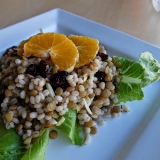
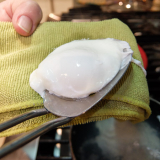
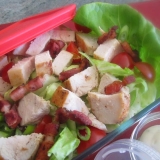
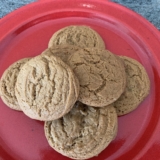
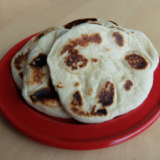
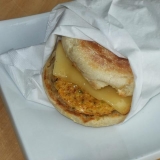
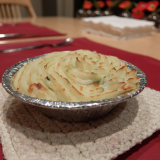
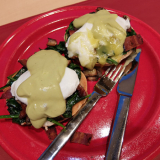
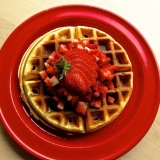
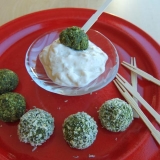

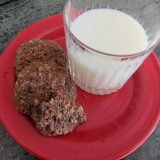
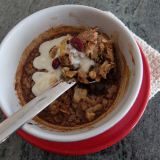
Leave A Comment